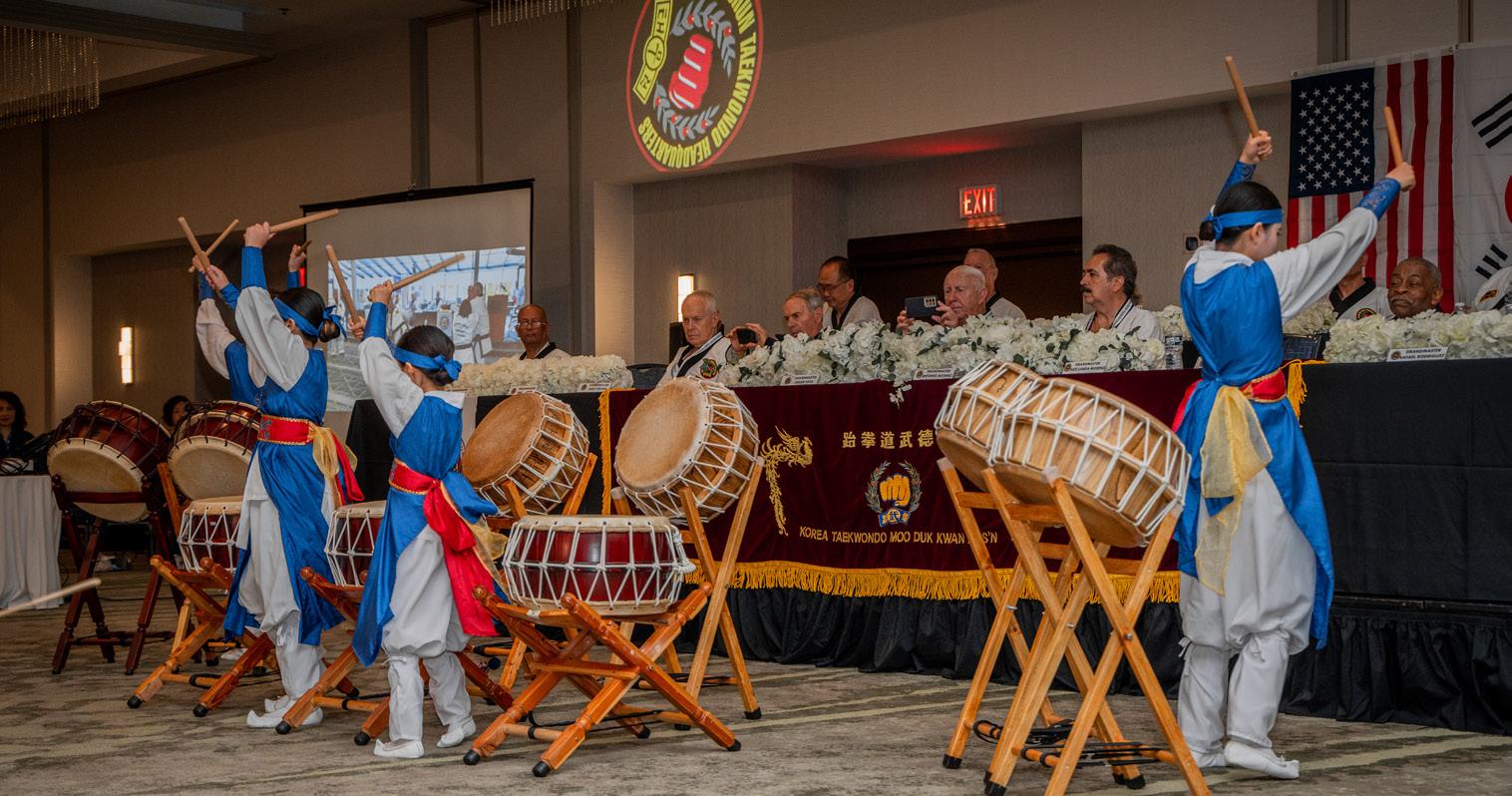
19 minute read
RichaRd chun's Legacy Lives on TiLL 2022 and Beyond...
By sR. MasTeR guy edwaRd LaRke
The Korean martial arts, particularly the empty-handed ones, have been quite the subject of discussion to say the very least. For every fact there seems to be 7 fallacies to accompany it. After two decades in Korea I have met a few truly amazing figures in the martial arts. I have also met a long list of paper tigers. A few of note I never got to meet. Back in Canada I had a massive martial arts library that seem to grow exponentially. One of the books that lead me to move to The Land of the Morning Calm was a massive tomb on Tae Kwon Do by GM Richard Chun. It was backed with a wide array of training advice, history, and philosophy in addition to an amazing number of patterns and techniques. It is ironic that I found myself decades later revisiting, not the book, but rather the man himself.
Advertisement
Richard Chun (known as Rhin Moon in Korea) was born February 22, 1935. He began studying Moo Duk Kwan at the age of 11 under two highly respected teachers in Seoul, Korea, Chong Soo Hong and Ki Whang Kim. He earned his first dan black belt at the age of 14. Keep in mind this was a fiercely bitter period of Korea's history. Martial arts were not a sport and a way to kill time after school. It was about staying alive.
He, continued his practice throughout his time in Korea including his education at Yonsei University where he organized and served as team captain of the Taekwondo Club. He immigrated to the United States in 1962.
In 1964, with the assistance of pastWTF president Dr. Un Yong Kim, he officially established the Richard Chun Taekwondo Center in New York, working with figures such as

Joe Hayes and Ralph Macchio and Gregory Hines. More than just a mentor and teacher to thousands, he was a scholar.
Chun was perhaps one of the most prolific Korean martial arts whose works included:
Moo Duk Kwan Tae Kwon Do: The Korean Art of Self-Defense (1974); Beginning Moo Duk Kwan Tae Kwon Do: Korean Art of Self-Defense Vol 1 (1975);
Intermediate Moo Duk Kwan Tae Kwon Do: Korean Art of Self-Defense Vol 2 (1975);
Tae Kwon Do: The Korean Martial Art (1976);
Karate for Beginners (Audiobook LP & Cassette) (1977);
Advancing in Tae Kwon Do (1982); Taekwondo Spirit & Practice: Beyond Self-Defense (Biography) (2002); Black Belt Poomsae: Koryo & Original Koryo (2013)
In addition to a myriad of accomplishments, he also:
-Graduated from Yonsei University in Seoul in 1957
- Appointed head coach of the U.S.A. Taekwondo team for the first World Taekwondo Championships (1973) -Created and organized the first Annual Universal Taekwondo Open Championships
- Inducted into the Black Belt Hall of Fame by Black Belt Magazine in 1979.
-Received many citations over the years from the Moo Duk Kwan and World Taekwondo Federation
-Named Special Assistant to the president of the World Taekwondo Federation
-Received the Presidential Award from the president of Korea
- PhD at Long Island University
- Become a professor of health and physical education at Hunter College in New York City
-Served as Senior International Referee at international championships and Olympic competitions
- In 1980, founded the United States Taekwondo Association (USTA)
- Founded The Richard Chun Taekwondo Club & Headquarters and introduced his protégé', the-tobe GM, Fred Kouefati
- 9th Dan in Moo Duk Kwan Tang
Soo Do in 1981
- 9th Dan in Taekwondo by Kukkiwon in 1989
- a member of the Lions Clubs International for 40+ years
-District Governor of New York
-Ambassador of Goodwill by the Lions Clubs International
Association for his humanitarian services worldwide
Tragically the exemplar leader passed away at home on 15 November 2017. If that wasn't enough of a blow to his followers, the pandemic we now as COVID nearly levelled every organization across the globe. Somehow his protégé, GM Kouefati kept the organization alive.
Amazingly enough a few short months ago, the Richard Chun Annual Convention - Moo Duk Kwan

77th Anniversary event was held. The monumental event was held on
November 5th and 6th at the Hilton Hasbrouck Heights/ Meadowlands. Special guests included senior members of the Korea Taekwondo Moo Duk Kwan Association. The schedule was as follows:
* Friday evening - Meetings with country and state representatives with the executive board of the Richard Chun TKDHQ & KTMDA privately to promote, grow and review future agendas and scheduled events. Also, discussions on working with the Korea Taekwondo Moo Duk Kwan Association in the future were held.
* Saturday morning - seminars - Tim Mc Hugh, Al Shim, Dragon Kim, & Kim Gylling
* Saturday afternoon - Dan testing1st to 9th Dan (30 + people)
* Saturday evening - Dinner banquet
Tim McHugh - History of MDK presentation
Awards and citations
Black Belt Ceremony
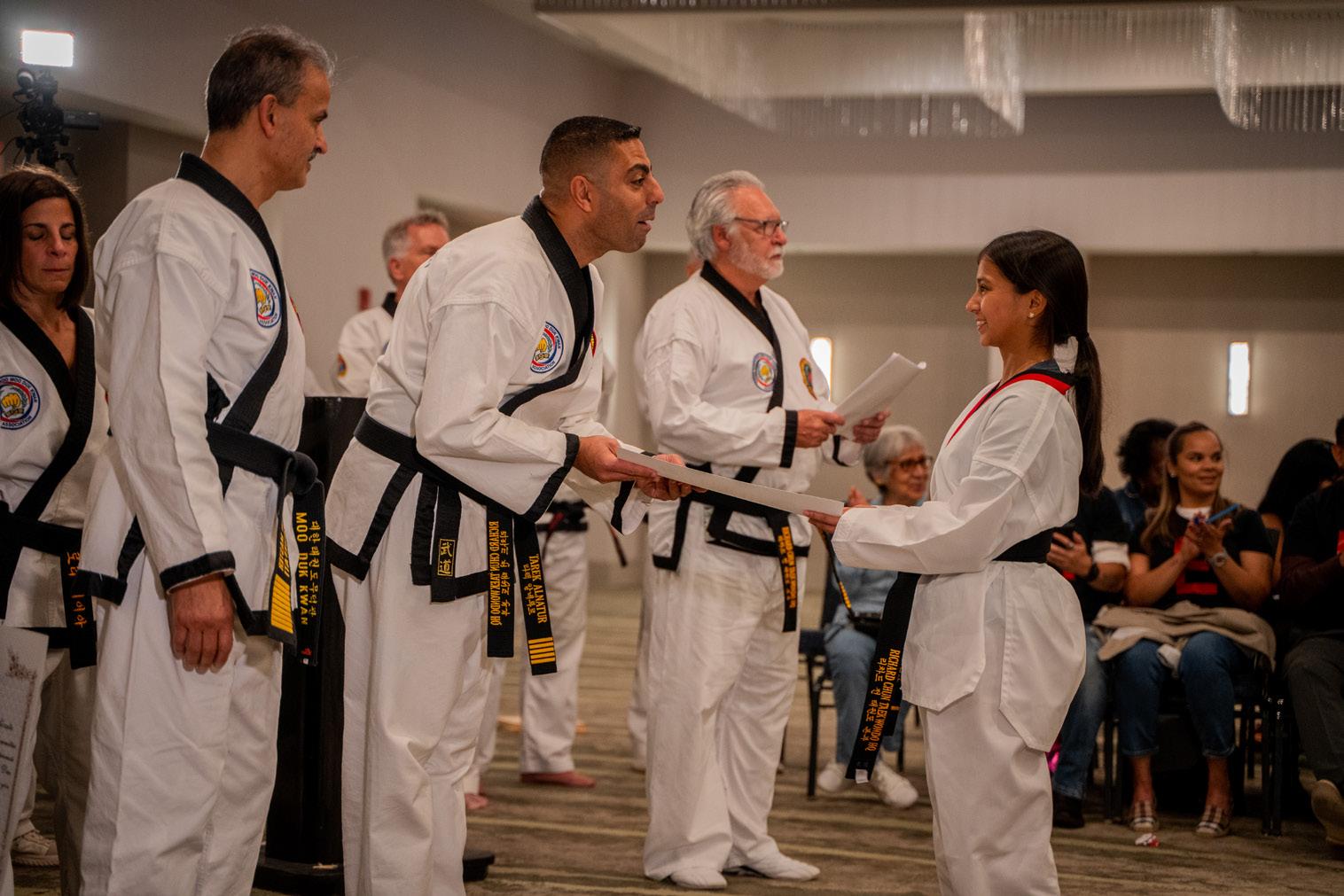
Official Recognition of Richard Chun Taekwondo Grandmasters Ceremony
* Sunday - Black Belt Forms Tournament
More meetings between both organizations
For more information you can contact either
GM Fred Kouefati - President and successor -orMaster Tarek Alnatur - Chief Operating Officer At info@rchun.mdk.com
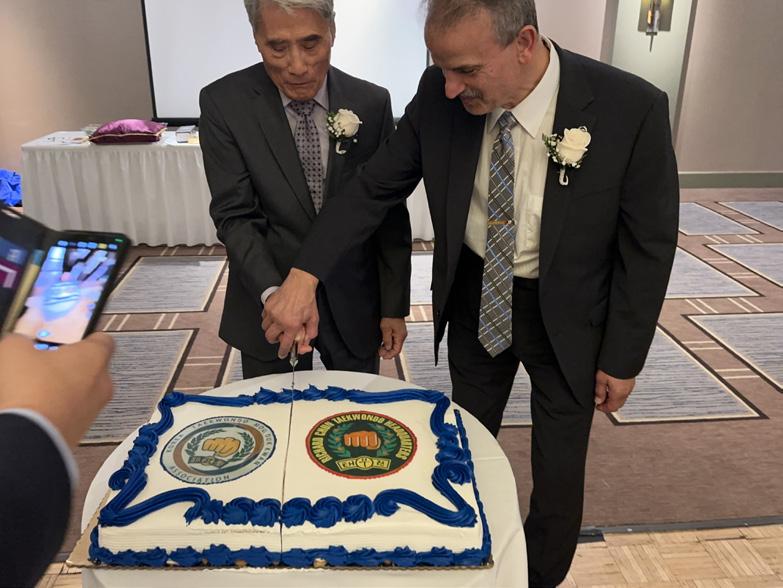
"My experience with the 5th anniversary of the Richard Chun seminar, was exquisite. My favorite part of the experience is seeing the diverse group and other schools mesh in a uniform fashion upholding traditional MooDukKwan way"Mohamad Zriek. School owner of Zriek Taekwondo in Michigan, USA.
"The Annual Richard Chun Taekwondo Convention combined with the 77th Anniversary of the Korea Taekwondo Moo Duk Kwan Association was a spectacular event. The opportunity to train with, and converse with, so many Grand Masters from both organizations was an incredible experience. The knowledge and comradery shared by both the Grand Masters, and all of the participants that attended from around the world, was a true demonstration of the spirit of Taekwondo at its finest that made this experience very enjoyable. The skills gained from working on both
Self Defense drills and Forms at this event left me a greater appreciation for Taekwondo. It was a once in a lifetime experience" - Jon Felske. Tang Soo Do Karate School owner in Long Island New York.

"My name is Adam Gordon. I have a school on Long Island that is affiliated with the Richard Chun Taekwondo Federation. I attended the Richard Chun Annual Convention and Korea Taekwondo Moo Duk Kwan Association 77th Anniversary celebration and had a fantastic time. It was everything I imagined it would be, and more. I had the opportunity to meet and train with my Taekwondo "brothers and sisters" from several different countries. There were so many Grandmasters at the event, all of whom were incredibly approachable, had a great sense of humor and eager to share their wisdom with others.
Grandmaster Fred Kouefati, Master Tarek Alnatur and all others who spent countless hours planning this event should be very proud of what they accomplished. I can't wait until next year's event!" - Adam Gordon. Also, Tang Soo Do Karate School owner in Long Island New York. (I know the testimonials might be long but they also said it's ok to shorten them on their behalf)
"Suddenly in 2017, my long-time teacher, mentor and coach on the path of the martial artist, was gone. Immediately there was an indescribable void, and for a long time it was hard to imagine how anything could fill it. I am happy for the Richard Chun Taekwondo Headquarters and for its commitment to preserving Grandmaster Chun's memory and teachings. This year's seminar in his memory surprised in many ways, not only with its professional arrangement and interesting program planned and put together by the management of RCTKDHQ. The biggest surprise for me, and my team coming from the other side of the globe, is the positive and outgoing approach that immediately upon first impression created a warm and familiar feeling, as if we have all known each other for many years. Grandmaster Chun had many students, and for me as one of them, it was extremely valuable to mingle with them and get to know them and exchange stories about Grandmaster Chun with them. Many new and warm relationships were built and we take home a new sense of belonging" - Kim Gylling. School Owner, Finland.
Sr. Master Guy Edward Larke has dedicated his life from a young age to the pursuit of the martial arts, Asian culture and hoplology. It led him to Korea in 2000 and has lived there since then. He lives in Seongnam city with his wife Gi-Ryung and son Alexander. He holds black belts in Teuk Gong Moo Sool, Taekwondo, Hapkido, Taekgyeon, Bon Kuk Kumdo, Korean kickboxing, Karate-do, Wushu, Cheonji-muyedo, and various other arts. Currently he teaches Taekwondo, Karate and Cheonji-muye-do full time in addition to writing for various magazines and running Kisa-Do Muye & Marketing. He can be contacted at kisadomuye@ gmail.com .
This is my martial arts dream team-a movie starring Jet Li and Michelle Yeoh directed by Yuen Woo Ping. It has everything you'd want in a kung fu movie: friendship, betrayal, revenge, love, more betrayal and revenge, character growth, good vs evil, and some very creative fight scenes and wire-fu.
When two young Shaolin monks are kicked out of the temple and have to find their way in the world, one chooses evil and one chooses good. The friends' choices, of course, put them on a collision path to betrayal and destruction.
Jet Li handles the fights scenes just as you would expect him to-marvelously. He's fast and believable even in some overthe-top wire scenes. Michelle Yeoh is agile and elegant whether wielding a sword or in a flying table fight. Their characters help each other out in their darkest moments without resorting to a forced romance. It was refreshing to see a friendship built on mutual respect for each other and each other's abilities.
Chin Siu Ho, who plays the friend who chooses the wrong path, does an admirable job of falling down the well into power and greed. The supporting cast of characters were fleshed out enough that I cared about what happened to them.
My only quibble is the comedy/ madness portion of the movie which goes on too long even if it results in Jet Li's character developing his new skill set. This isn't a true spoiler for kung fu movie enthusiasts, it's the common formula. Good guy gets beaten, goes off to develop a new kind of kung fu, goes back and confronts the bad guy. In a movie with a high body count, those supposedly funny moments dragged on too long for me.

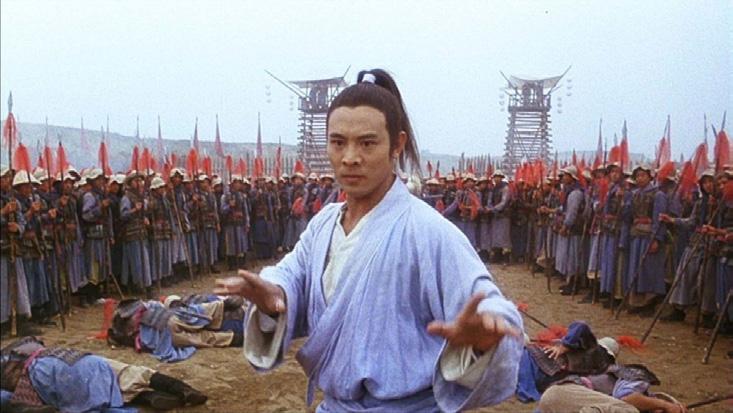
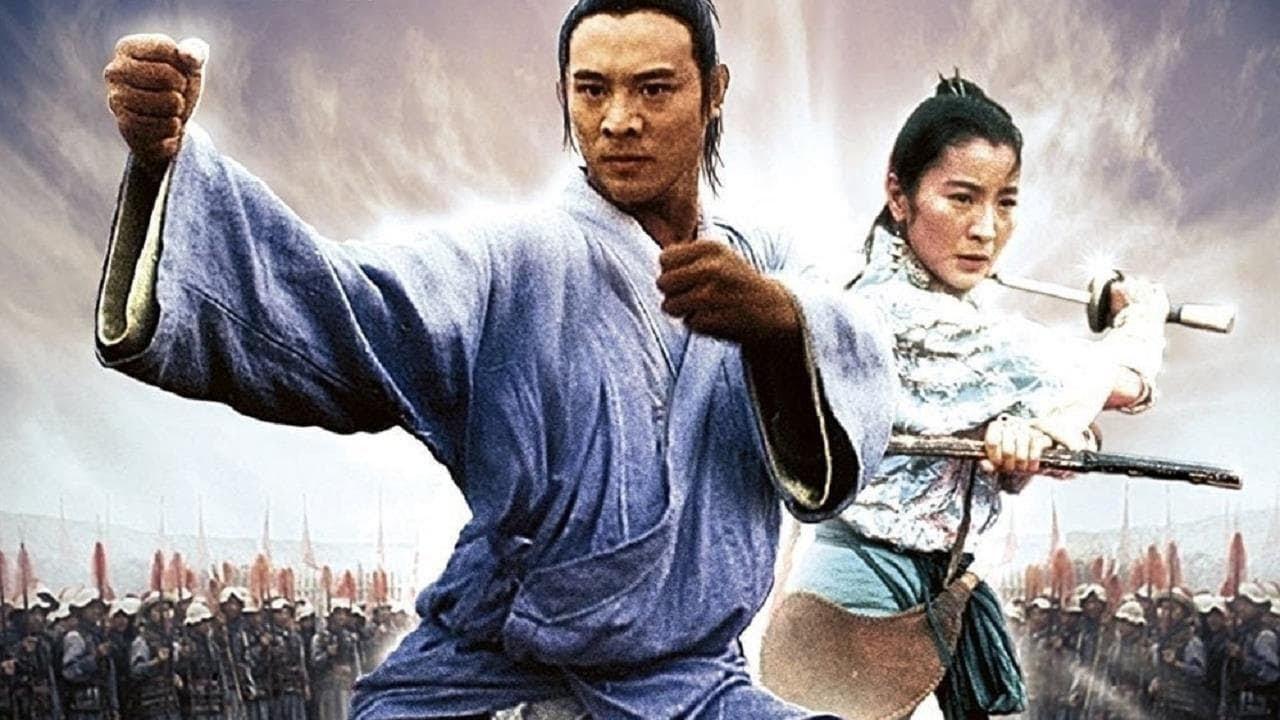
The cinematography is good but not great. The focus is on the fights and Yuen Woo Ping excels as always in coming up with creative ways to stage fights--even a giant
game of kung fu Jenga!
The movie may be dated, but Jet Li and Michelle Yeoh make up for any story deficiencies. Tai Chi Master has spectacular fights throughout the movie featuring two of the greats of the genre, definitely worth the price of admission.
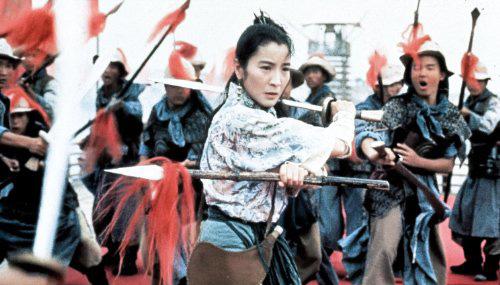
Trailer: https://www.youtube. com/watch?v=JdJpx8n38Wo

Dojo Stories
"Ryukyu Kenpo Karate do Enkaku Gaiyo".
by Chojun Miyagi
English translation by YAMADA Kiyotaka (Sanzinsoo)
Remarks: The title in Japanese is "Ryukyu Kenpo Karate do Enkaku Gaiyo". This essay appeared as a supplementary article to two books, "Okinawan Karate do" by Shoshin Nagamine (1975, Shinjinbutsu Oraisha) and "Okinawaden Gojuryu Karatedo" by Eiichi Miyazato (1979, Jitsugyono Sekaisha). Some parts have been omitted in this translation.
Original Remarks: This essay was written and prepared by Master Chojun Miyagi especially for the club members when he gave us the talk "About Karatedo" and his demonstration in the lecture room on the 4th floor of the Meiji Shoten in Sakaisuji, Osaka on January 28, 1936. This essay was originally written by Chojun Miyagi and presented at the Meiji Shoten in Sakaisuji, Osaka, on January 28, 1936.

Below is a translation of the essay.
This is one of the few Chojun Miyagi writings to survive the war.
1. Preface
What is karate? It is the art with which we exercise the mind and body for the preservation of health, but in an emergency, it is also the art of self-defense. In most cases, we fight with our bodies (hands, feet, elbows, etc.) to defeat opponents. However, according to the circumstances, we can also use weapons (such as Bo, Sai, Nunchaku, Tonfa, Eku, Kama and others.).
People often misunderstand karate. When they see someone break five wooden boards or some pieces of tiles with their fist, they think that this (tameshiwari) is a fundamental part of karate. Of course, NO, it's just a trivial part of karate. Like other fighting arts, the truth of karate or the Tao of karate can only be understood and mastered with the goal that is beyond the teachings and impossible to describe in words.
2. How were martial arts introduced to Ryukyu (Okinawa)?
The name "karate" is a referential term in Ryukyu. Karate originated from Chinese kung-fu. We have few books on the origin of Chinese kung-fu, so we cannot conclude definitively, but according to one of the theories, the martial arts originated in central Asia and the area around what is known today. like Turkey when the ancient civilizations developed. And then it was introduced to China gradually. However, we also have another theory. It says that about 5,000 years ago, Chinese kung fu originated from the time of the Yellow Emperor (Emperor Huang), who built a brilliant culture in the Yellow River basin. In any case, it is not difficult to imagine that the prototype of martial arts was born from the very fighting spirit that human beings possess by nature. For example, most styles of Chinese kung-fu were created by imitating animal fights. You can see it from the style names, such as tiger style, lion style, monkey style, dog style, crane style, etc. In the later era, Chinese kung-fu was divided into the southern school and the northern school. Also, each school was divided into Neijia and Waijia. Neijia's characteristic is mainly smoothness, and it is a defensive arts fight. Wudang kung-fu (Tai chi, for example) is typical of Neijia. Waijia's characteristic is mainly toughness, and it is an aggressive fighting art. Shaolin kung fu is typical of Waijia, which was created in the Shaolin Temple in Songshang Mountains,
Henan Province.
And later, in the times of the Tang Dynasty and the Song Dynasty, we can find many kung-fu warriors who gained great fame. When we consider how karate was introduced to the Ryukyu (Okinawa), we have various opinions and no historical evidence. We have not yet come to a correct conclusion on this matter. There are three main opinions, namely "Thirty-six Chinese Immigrants", "Oshima Notes", and "Importation in the Keicho Period". The simple explanation of each opinion is as follows.
(1) Thirty-six Chinese immigrants
In 1392 (Ming dynasty in China), thirty-six Chinese immigrants came to the Ryukyu from Fujian province. At that time, Chinese immigrants from Fujian province brought karate to the Ryukyu.
(2) Oshima Notes
In 1762, a merchant ship from the Ryukyu Kingdom was caught in a severe storm on the way to Satsuma (now Kagoshima Prefecture), and washed ashore on the coast of Oshima, Tosa (now Kochi Prefecture). Shiohira Pechin, a highranking officer on the ship, was an intelligent person. He was helped by Choki Tobe, an intellectual who lived in Oshima. Tobe wrote Shiohira's interesting stories about the Ryukyu Kingdom. His writings were called "Oshima's notes". The third volume of these notes says that "Koshankun, a kung-fu warrior, came from China to Ryukyu (Okinawa) bringing his disciples with him."
According to the Notes, at that time people called martial arts "Kumiaijutsu" instead of karate. These notes are the most reliable literature on karate.
(3) Importation in the Keicho Period
In 1609 (14th year of the Keicho period), the Shimazu clan of Satsuma (now Kagoshima Prefecture) invaded the Ryukyu Kingdom, and they banned the Ryukyu people from owning weapons. Some believe that karate was created spontaneously due to the cruel oppression of Satsuma. Others instead insist that karate was not a domestic creation but what was imported from China. I think it is reasonable to consider that karate was a fusion of Chinese martial arts and "Te", native martial arts that already existed, so karate developed remarkably and still rationally today. We have other different opinions about the origin of karate, but they are in my opinion just popular misconceptions and not worth studying.
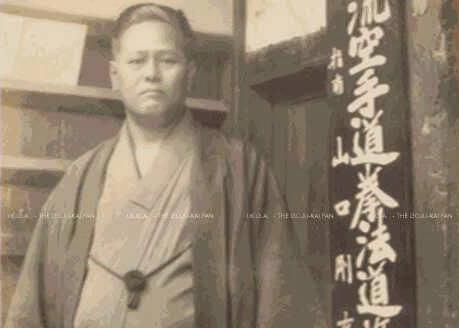
As mentioned above, so far we do not have a definitive and convincing opinion. Anyway, karate has been developed, modified and improved for many years.
3. Karate circles in the past
We also do not know the origin of the name "karate", but it is also true that the name "karate" was made recently. In the old days it was called "Te". At that time, people used to practice karate in secret, and a master would only teach the Kata to his best disciple. If he did not have a suitable disciple, he would never teach anyone, and eventually such a Kata would be completely lost. As a result, there are many Kata that were never transmitted. Around the middle of the Meiji period (1868-1912), prominent karate masters abolished the old form of practice in secret. Karate was opened to the public, so it was soon recognized by society. It was the dawn of the development of karate. In accordance with the rapid progress of culture, karate was also recognized as an important part of physical education, and was adopted as one of the teaching subjects in the school. Therefore, in the end, karate has gained social approval.
4. How we teach karate in the present.
According to oral history, in the old days, karate teaching policy emphasized self-defense techniques. With only a motto of "no first attack in karate", the teachers showed their students the moral aspects. However, I also heard that they actually tended to neglect such moral principles. So gradually the teaching policy was improved with the change of the times. We now suspend and abolish the mistaken tradition of "body first and mind second" and turn to the Tao of fighting arts or the truth of Karate. Finally, we have got the correct motto "mind first and body second", which means that karate and zen are the same.
The recognized instructors who are engaged in teaching karate in Okinawa Prefecture and outside of Okinawa Prefecture are as follows.
(In random order)
In Okinawa Prefecture:
Kentsu Yabu, Chomo Hanashiro, Chotoku Kyan, Anbun Tokuda, Juhatsu Kyoda, Choshin Chibana, Jinsei Kamiya, Shinpan Gusukuma, Seiko Higa, Kamado Nakasone, Jinan Shinzato, Chojun Miyagi
Outside of Okinawa Prefecture:
Gichin Funakoshi, Choki Motobu, Kenwa Mabuni, Masaru Sawayama, Sanyu Sakai, Moden Yabiku, Jizaburo
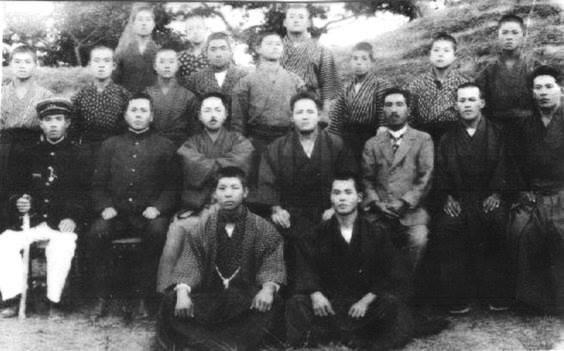
Miki, Yasuhiro Konishi, Shinji Sato, Mizuho Mutsu, Kamesuke Higaonna, Shinjun Otsuka, Shin Taira, Koki
Shiroma, Kanbun Uechi
5. About karate or Ryu styles
There are various opinions about Ryu or karate styles in Ryukyu (Okinawa), but these are just assumptions without any deep research or definitive evidence. Regarding this matter, we feel as if we are groping in the dark.
According to a popularized opinion, we can categorize Karate in two styles; Shorin-Ryu and Shorei-Ryu. They insist that the former is suitable for a skinny person, while the latter for a stocky person. However, such an opinion turned out to be false in many ways. In the meantime, there is a version that we could trust more. It says: that during the Qing or Ching dynasty in China, around 1828, our ancestors inherited a style of kung-fu from the Fujian province in China. They continued their studies and formed the karate that we would later know as Goju-Ryu. Even today there is still a very orthodox group that would continue to practice the genuine and authentic karate that gave rise to Goju-Ryu.
6. The characteristic of karate
Some important points to note about karate are the following:
(1) A large or spacious place is not required to practice karate.
(2) You can practice karate alone. You can also do it together with others by forming a group.
(3) You don't have to spend many hours practicing karate.
(4) You can choose the appropriate Kata for each one's physical fitness and practice it regardless of age and sex.
(5) Without spending a lot of money, you can practice karate with simple equipment (like Makiwara).
(6) Karate is very effective as a means of maintaining and improving health. There are many karatekas who stay very healthy and live a long time.
(7) As a result of training the mind and body, you can cultivate your personality and acquire an indomitable spirit.
7. The future of karate-do
The days of secretly teaching karate are over, and the new era has arrived where we practice and study karate publicly and officially. Therefore, the future of karate-do looks bright. Taking this opportunity, we must stop advertising karate as a mysterious and magical fighting art from a small island called Ryukyu. We should open karate to the world and receive criticism, opinions and studies from other prominent martial artists. In the future, we should invent full guards to train with due safety like other fighting arts, so that Karate will become one of the most important Japanese fighting arts. Today, karate-do has become popular all over Japan, where many people study very hard. Even outside of Japan, karate-do is already becoming popular. There is a man who graduated from the university in Tokyo and studied karate there. He is now propagating karate-do in Europe. In May 1934, I was invited to show and teach karate-do in Hawaii - USA, by an important newspaper. Karate clubs have been established in Hawaii ever since.
As mentioned above, now Karatedo has become not only a Japanese martial art but also an international martial art.
8. The Karate teaching method
In the same way that each person has their distinctive character, muscle development is also different. Therefore, at first, we do "Preparatory Exercise" (Jumbi Undo) to develop our muscles so that we can practice karate techniques more easily (Kihon), then "Basic Kata", "Supplementary Exercises" (Hojo Undo), " Superior Kata" and "Training of and for Kumite". The scheme is as follows.
(1) Preparatory exercise
We exercise every muscle in our body to improve flexibility, strength and endurance, and then we practice the basic Kata, ie Sanchin, Tensho or Naihanchi. We do this preparatory exercise again after the Kata practice to relax our muscles. And we take a breathing exercise and then we rest in silence.
(2) Basic Kata.
Sanchin, Tensho and Naihanchi are basic and fundamental Kata. By practicing them, we will be able to adopt a correct posture. We can inhale and exhale correctly. We can adjust by increasing or decreasing our power harmoniously. We can develop a powerful physique and a strong will of a warrior.
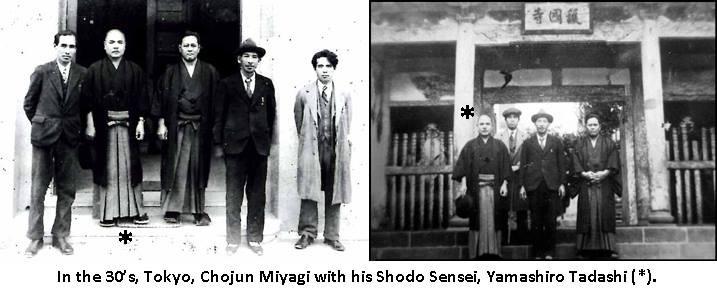
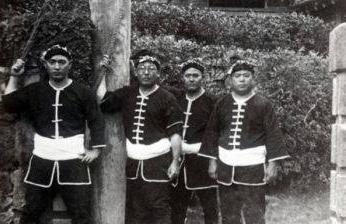

(3) Supplementary exercise
This exercise allows us to learn and perform Kaishu Kata well. We exercise each part of our body with a particular movement. We also practice with various equipment to improve our total external strength.
(4) Kaishu Kata
Today we have around twenty or thirty Kata, and their names are various depending on their creators. The Kata has defense and offense techniques (Bunkai) that are properly connected. It has several directions of movements (Embusen). We must perform Kata by using the energy of the mind and body according to its technical purpose so that we can learn the principle of unbinding and binding.
(5)
Kumite Training
We disassemble the chosen Kata and study its defense and attack techniques. Understanding its technical purpose, we practice the various attack and defense alternatives with fighting spirit as a real situation (Bunkai, Tuite)
I summarize as follows. We induce the interaction of the mind and the body through the fundamentals of the Kata Sanchin, Tensho and/or Naihanchi. We develop the spirit of martial arts through the acquisition of fighting techniques through the correct practice of Kaishu Kata training and its subsequent Kumite.
Gerardo Balves
7th Dan Kobayashi-ryu Kyudokan Coordinator of the International Group of Dojos Kyudo Mugen Kyudokan https://www.facebook.com/gerardo. balves
Music and Martial Arts
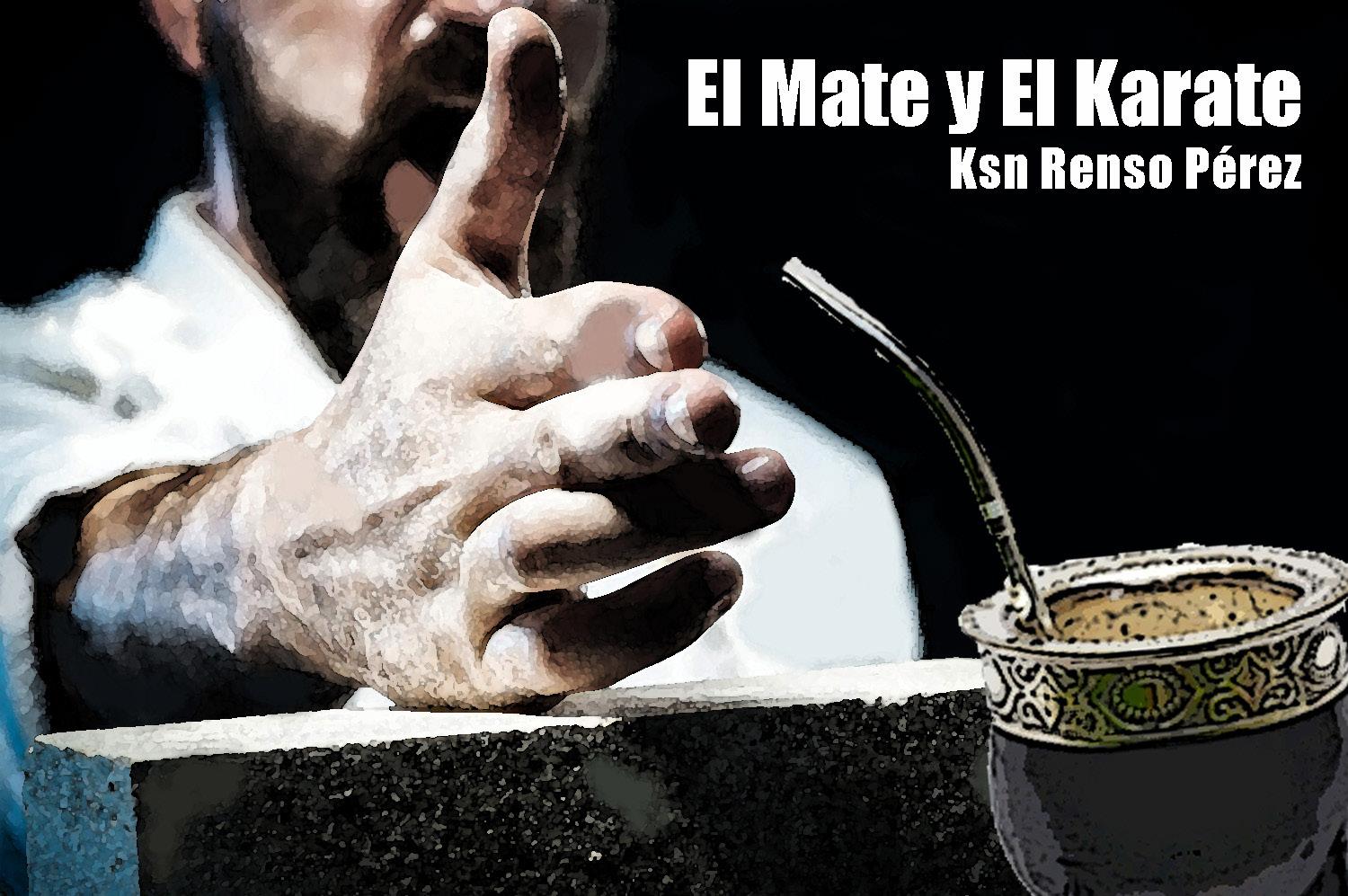
You will surely wonder what these two disciplines, so different in their appearance, have in common. It is impossible for the logical mind to find similarities between them. In what way can someone who executes a sword form and a violinist, for example, be similar?
To begin with, we will say that both are artistic disciplines (the very name "martial arts" refers us to it). A tuned instrument and a sharp sword are similar in that both are tools (instruments) of the spirit and the practitioner must seek the deep spiritual essence of it through hours of practice with them. This is how the great Taoist masters who masterfully developed in both paths maintained it. A movement of the samurai sword that cuts the air in two is nothing more than a spatial drawing, accompanied by a music of silences. What is it but “pure music”, the path that an arrow describes to the target?, starting from the depths of the spirit, until reaching the center of the target. Martial arts and music share the same principles: complex chords, sets of silences, and unique melodies. The execution of a kata is not only a martial execution, but it is also sound art. His movements are nothing more than music, since the performer moves on the tatami as if he were walking on a pentagram, or rather as if he were reading a score with his body. Some metaphysical texts affirm that each particular type of energy attracts other similar ones, that the fine arts attract other soulmate arts; that is why it is common to see many martial artists who also make music, paint, write, etc. In the movie "Hero" by Chinese director Zhang Shimou (an excellent film, by the way), you can see at one point, the protagonist, played by Jet Li, a mythical traditional Chinese hero of the sword, who before fighting a duel with death with an enemy, he asks a traveling musician who was in the place, to continue playing his music. And before starting the fight he says: "Music and martial arts share the same principles, since they both tend towards the harmony”. And he also adds some concepts, such as that the two share principles of rhythm, cadence, chords, and even melodies. It is also true that both disciplines must be practiced regularly and constantly to improve and achieve mastery, both in a martial style and in an instrument. And to consistently and regularly practice either way for years, a discipline like that of a samurai or a monk is necessary. I believe that both music and martial arts are absolutely complementary disciplines, like a yin-yang in the life of an individual and that for any artist from both branches, whether they are musicians or practitioners of any martial style, it can be very enriching to work with the another complementary discipline, as well as learning a little from another practice, which is very different in appearance from his usual practice, and yet it is the same thing at the same time, like two sides of a coin. Some martial arts practitioners, both external and internal, use to put music in their practice sessions (although it is more common to see in those who practice especially internal arts such as tai chi chuan or chi kung). But not all teachers agree with this, since in a text on tai chi it is stated that “… music can be a support, especially for beginners, to help relax.
There are also those who used to set the rate of execution of the form and its duration. Although it is not very convenient for the practice of Tai Chi because it can cause dependence on music as well as the emotional state that it induces. The ideal sound is that of nature. The teaching experience shows that both disciplines nourish and enrich each other in the life of those who practice them; That is why we recommend that those who practice either of the two, start and get to know the other, so that according to the common ideals of all the arts, this helps people to be wiser and happier in this world.

